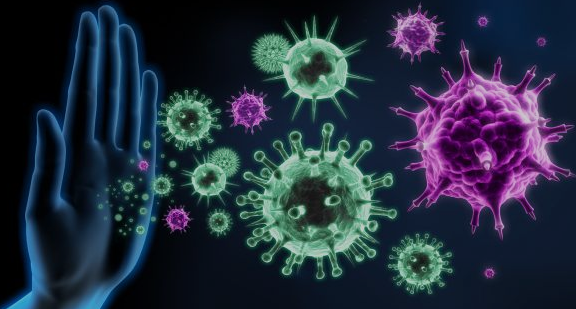Infectious Diseases: Understanding the Threat and Taking Precautions
Infectious diseases are illnesses caused by microorganisms such as bacteria, viruses, fungi or parasites. These microorganisms can enter our bodies through various means such as air, water, food, or contact with an infected person. Once inside, they can multiply and cause a wide range of symptoms and health complications.
Despite advancements in medicine and technology, infectious diseases remain a major threat to public health around the world. In fact, according to the World Health Organization (WHO), infectious diseases are responsible for approximately 25% of all deaths globally. This highlights the importance of understanding these illnesses and taking necessary precautions to protect ourselves and our communities.
Types of Infectious Diseases
There are numerous types of infectious diseases, each with their own unique characteristics and transmission methods. Some common examples include:
- Respiratory infections: These are caused by bacteria or viruses that infect the respiratory tract, including the lungs, throat, and sinuses. Examples include influenza (flu), tuberculosis (TB), and pneumonia.
- Gastrointestinal infections: These are caused by consuming contaminated food or water, or coming into contact with an infected person. Common types include cholera, hepatitis A, and salmonellosis.
- Sexually transmitted infections (STIs): These are spread through sexual contact and can lead to serious health complications if left untreated. Some common examples include HIV/AIDS, gonorrhea, and chlamydia.
- Vector-borne diseases: These are transmitted through the bites of infected insects or animals. Examples include malaria, Lyme disease, and dengue fever.
Understanding Transmission
Infectious diseases can be transmitted in several ways, including:
- Direct contact: This occurs when a person comes into direct physical contact with an infected individual, such as touching or kissing.
- Indirect contact: This can happen when a person touches an object or surface that has been contaminated by an infected person, such as doorknobs or utensils.
- Airborne transmission: This occurs when the microorganisms are spread through droplets in the air, typically through coughing or sneezing.
- Food and waterborne transmission: Consuming contaminated food or water can lead to the spread of infectious diseases.
- Insect bites: Mosquitoes, ticks, and other insects can carry and transmit certain infectious diseases through their bites.
Understanding how these diseases are transmitted is crucial in preventing their spread. By knowing how they are commonly spread, we can take necessary precautions to protect ourselves and others.
Taking Precautions
Prevention is key when it comes to infectious diseases. Here are some simple measures you can take to protect yourself:
- Practice good hygiene: Regularly washing your hands with soap and water can help prevent the spread of many infectious diseases.
- Cover your mouth and nose: When coughing or sneezing, be sure to cover your mouth and nose with a tissue or your elbow to prevent the spread of respiratory infections.
- Get vaccinated: Vaccines are one of the most effective ways to prevent certain infectious diseases. Make sure you and your family are up to date on vaccinations.
- Avoid close contact with sick individuals: If someone is sick, try to avoid close contact with them to prevent the spread of illness.
- Cook food thoroughly: Cooking food at high temperatures can kill harmful bacteria and prevent foodborne illnesses.
- Use insect repellent: If you live in an area where vector-borne diseases are prevalent, using insect repellent can help protect against bites.
In addition to these precautions, it’s important to seek medical attention if you experience any symptoms of an infectious disease. Early detection and treatment can help prevent the spread of illness and improve outcomes.
The Role of Public Health in Disease Control
Public health plays a vital role in the control and prevention of infectious diseases. From surveillance activities and research to community education and vaccination campaigns, the efforts of public health organizations are instrumental in battling the spread of these diseases.
The Global Impact of Infectious Diseases
Infectious diseases do not recognize borders and can have catastrophic impacts on a global scale. This section will delve into the economic, social, and health impacts of these diseases from a worldwide perspective.
Advances in Disease Detection and Treatment
The scientific community is continuously making strides in the detection and treatment of infectious diseases. This section will highlight some of the latest advancements and their importance in the fight against infectious diseases.
The Power of Community in Disease Prevention
Community participation is vital in the prevention and control of infectious diseases. This section will explore how community actions can contribute to disease control, from maintaining sanitation in neighborhoods to participating in vaccination drives.
Emerging Infectious Diseases: A Growing Threat
Emerging infectious diseases are a growing concern for global health. This section will shed light on some of the emerging infectious diseases, their causes, and why they pose a significant threat to public health. It will also discuss the importance of preparedness and response in mitigating the impact of these diseases.
Conclusion
Infectious diseases pose a global threat to public health. By understanding transmission methods, taking precautions, and supporting public health efforts, we can control and prevent their spread. With research and advancements in detection and treatment, we strive for a healthier world free from these diseases. Let’s protect ourselves, our communities, and the world. Stay informed, take precautions, and remember that prevention is better than cure. Stay healthy and safe!


